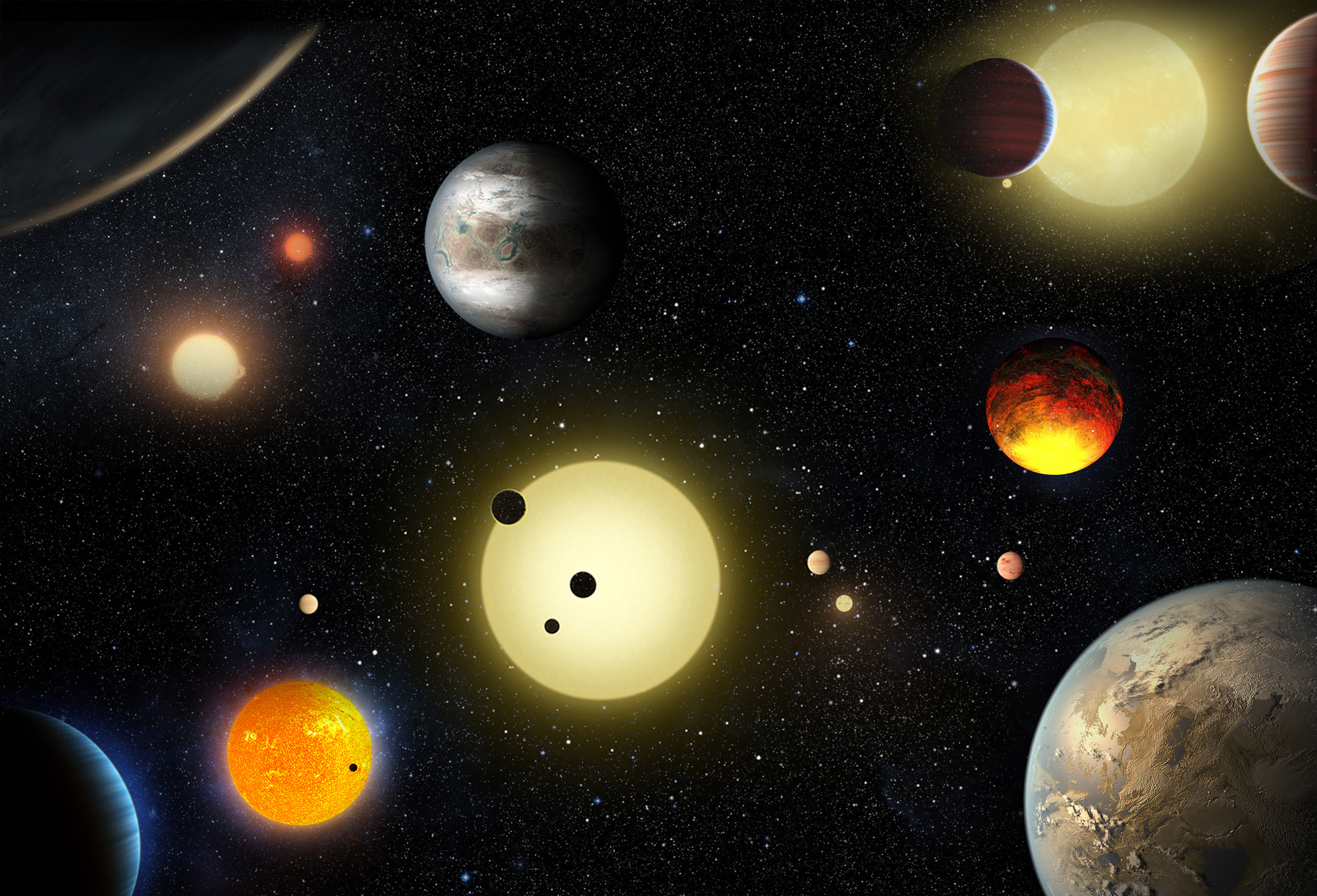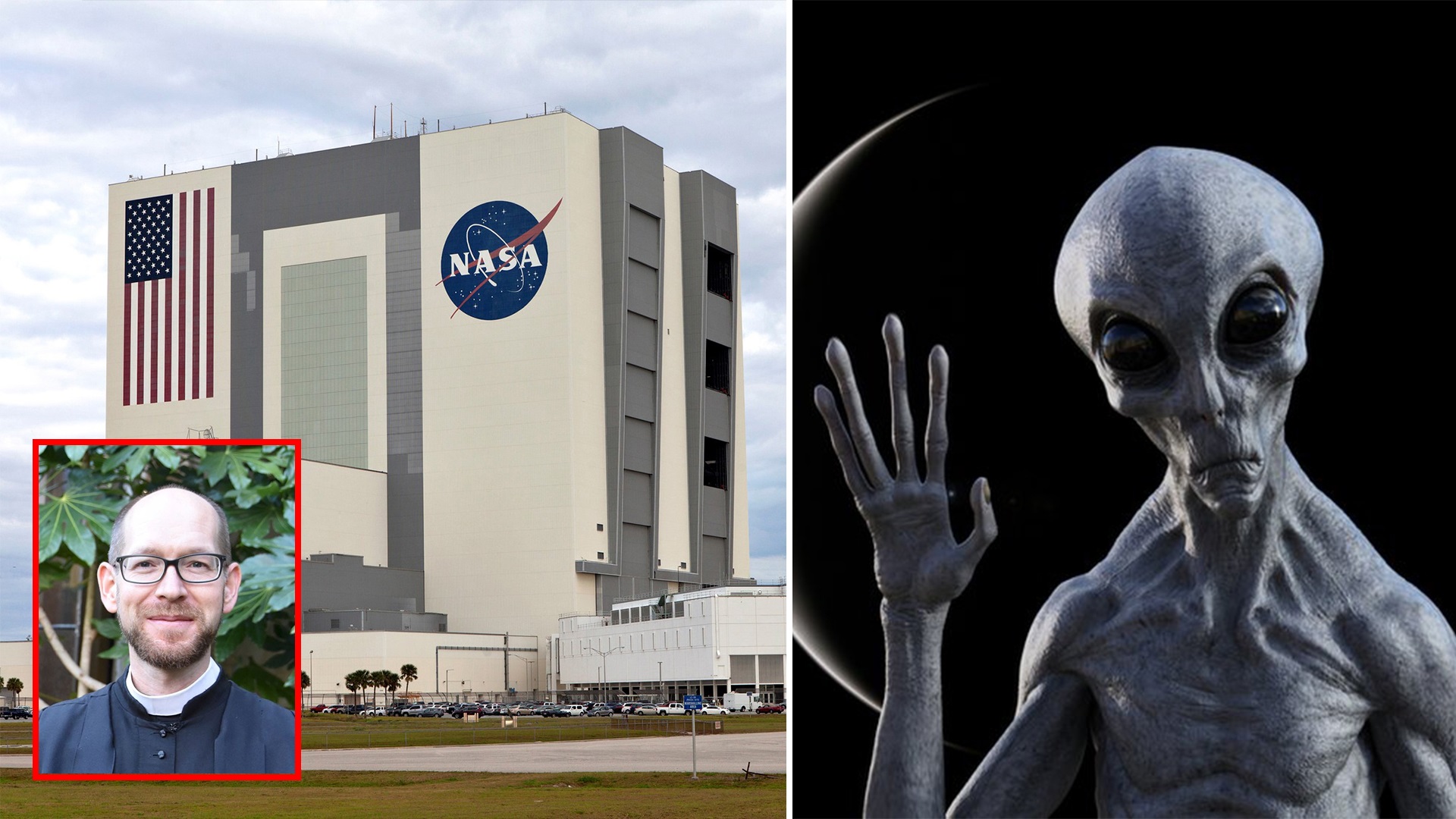High-ranking NASA experts claim that we are on the brink of finding life on other planets.
During a panel discussion on NASA’s efforts to hunt for habitable planets and alien life, NASA top scientist Ellen Stofan remarked, “I believe we will have strong signs of life beyond Earth within a decade and I think we will have conclusive proof within 20 to 30 years.”
“We know exactly where to look. We have figured out the best way to look “During the live broadcast of the event, Stofan said. “As long as the technology is available, we are likely to utilize it. As a result, I believe we are well on our way.” Alien life may exist, according to these five bold claims.
As Grunsfeld observed on Tuesday, “I believe we are a generation away in our solar system, whether it is an ice moon or Mars, and one generation [away] on a planet orbiting a close star.”
Many habitable environments
There are many places in the solar system and the Milky Way galaxy that potentially sustain life as we know it, according to Grunsfeld’s recent findings.
Under the ice shells of Jupiter’s Europa and Ganymede, as well as Saturn’s Enceladus, there are vast seas of liquid water. Water may have flowed across Mars’ ancient oceans, causing seasonal black streaks on the Red Planet’s surface today.
The Curiosity rover of NASA has also discovered carbon-containing organic compounds and “fixed” nitrogen on Mars’ surface, essential elements for life similar to that found on Earth.
Further out in space, NASA’s Kepler space telescope has discovered planets around virtually every star in the night sky, and many of these worlds may have life. As a matter of fact, Kepler’s study has demonstrated that rocky planets like Earth and Mars are likely more frequent in the cosmos than gas giants like Saturn and Jupiter.
NASA’s Astrophysics Division chief Paul Hertz says that the galaxy is saturated in water exactly like the solar system.
“A damp area,” Hertz described the Milky Way during the incident on Tuesday. “The interstellar clouds that give rise to planetary and star systems may be shown to include water. In the debris discs that will become planets surrounding other stars, we can detect water, and in other solar systems, we can observe comets dissipating as their star evaporates them.”

Looking for life
It is considerably more difficult to find evidence of extraterrestrial life than it is to discover prospective habitats. However, Stofan and other academics claim that researchers are continuously moving toward this more difficult and ambitious objective.
As a field geologist, “I go out and tear apart rocks and search for fossils,” Stofan said. “Those are really rare. The only way we will be able to bring back convincing proof for the existence of life on other planets for the benefit of future generations of scientists will be via the efforts of people on Mars’ surface, including geologists, astrobiologists, and chemists.”
It is also possible that NASA may send a mission to Europa in 2022. This $2.1 billion mission’s primary objective is to determine whether or not the frozen moon is habitable, but it might potentially look for evidence of extraterrestrial life. Researchers at the agency are trying to figure out how to collect samples from the water vapor plumes that seem to be erupting from Europa’s south polar area.
A super-Earth, which is larger than our own planet but smaller than gaseous planets like Uranus and Neptune, will be studied by JWST, which will see the starlight passing through the air. Hertz believes that this technology, known as transit spectroscopy, will not work on planets that may be habitable.
Instead of employing a “coronagraph” to screen away from the brightness of their parent stars, scientists will likely have to use direct imaging of tiny, rocky exoplanets in order to search for biosignature gases.

Scientists have been searching for signs of life in the universe for decades. Microscopic creatures, such as methanogens, have been found on various planets, such as Mars and Venus. After the Curiosity rover identified methane traces in Mars’ atmosphere in 2019, efforts were stepped up.
However, subsequent examination failed to provide any new information.
In the meanwhile, scientists made the groundbreaking finding of phosphine on Venus, a poisonous chemical that is often associated with the existence of life on other planets.
Nothing was ever discovered, though, once again.
Even Nevertheless, efforts in the search for extraterrestrial life (SETI) and the transmission of messages to extraterrestrial intelligence (METI) have increased significantly since 2010.
There has been a lot of speculation about the possibility of finding life on other planets by the year 2025. In fact, NASA head scientist Ellen Stofan predicted this in 2015.
It is a tantalizing concept that we may be only three years away from a breakthrough in the search for alien life.
During a panel discussion on NASA’s quest to find habitable planets and alien life, she said: “I believe we will have strong evidence of extraterrestrial life within the next decade, and definite proof within the next 20 to 30 years.
“We know exactly where to look. “We have mastered the art of spotting the telltale signs. “Most of the time, we have the technology and we are on a route to putting it to use. As a result, “I believe we are now on the path.”
He also said that “I believe we are one generation away in our solar system,” whether it is on an ice moon or on Mars, and “one generation away” from another planet in the vicinity of another star.
The solar system and the Milky Way galaxy are rich with settings that potentially host life, according to recent findings.
Europa, Ganymede, and Enceladus all contain liquid oceans under their ice shells, as well as Saturn’s Enceladus.

Seasonal black streaks on Mars’ surface may have been formed by salty water that formerly flowed over the planet’s surface.
Further out in space, NASA’s Kepler space observatory has found evidence of planets orbiting virtually every star in the night sky.
Many of these planets may be livable, with Kepler’s discoveries showing that rocky worlds like Earth and Mars are significantly more likely to exist than gassy giants like Jupiter and Satur.
Paul Hertz, the head of NASA’s Astrophysics Division, said the galaxy looks to be saturated with water as well.
According to him, the Milky Way is like a “soggy environment,” and interstellar clouds from which planetary and star systems are formed include water.
For the first time, we can see water in the discs of debris that will form planetary systems around other stars, and we can also observe the process of comets dissolving in other solar systems as their stars evaporate them.”
Recently, a group of scientists from the University of Cambridge discovered a new category of habitable planets that has the potential to totally alter the game.
Known as “Hycean” planets because of their hydrogen-rich atmospheres and hot, ocean-covered surfaces, the newly discovered exoplanets are both more numerous and simpler to locate than Earth-like worlds.
Furthermore, astronomers believe that focusing on Hycean planets might lead to the discovery of life beyond our solar system within the next two or three years.
NASA consults religious academics to help mankind prepare for contact with extraterrestrial life
Theologians including a priest, a rabbi, and an imam have been engaged by NASA to study how the world would respond if evidence of life on other worlds other than Earth were discovered.
A program at Princeton University’s Centre of Theological Inquiry (CTI) in New Jersey has apparently attracted at least 24 researchers from the United States space agency NASA so far.
The center’s major goal is to develop “bridges of understanding” between academics from diverse disciplines, scientists, and politicians on “global challenges,” and it got a $1.1 million NASA grant in 2014.
The program’s goal is to examine how major faiths throughout the globe might respond if evidence of life on other planets emerged, as well as how such evidence may alter religious doctrines about God and creation.
One of the participants in the NASA-sponsored program at CTI is Rev Dr Andrew Davison, a Cambridge theological scholar who has a PhD in biology from Oxford.
Astrobiology and Christian Doctrine, Davison’s upcoming book, examines the idea that God might have created life elsewhere in the cosmos, based on his study at Princeton.
As Davidson said in a blog post on the University of Cambridge’s website, “religious traditions would be a crucial aspect in how humanity would deal with any such evidence of life elsewhere.”
Dr Andrew Davison, a Cambridge theological researcher, believes that God may have created a life outside in the cosmos, based on his Princeton study.
Many people would seek advice from their religious traditions on what alien life implies for human life’s “status and dignity,” according to a copy of his book obtained by British newspaper The Times.
There is no telling when or where we may find evidence of extraterrestrial life, but if and when we do, it will be helpful to have considered the ramifications in advance.
This view was echoed by other religious leaders, such as the Bishop of Buckingham Alan Wilson and Rabbi Jonathan Romain from the Maidenhead Synagogue and Imam Qari Asim from the Makkah Mosque in Leeds, according to The Times.
The surface of Jupiter’s moon Europa, which may provide information about the waters underneath.
Ex-NASA Astrobiology Institute Director Carl Pilcher, a former theologian, noted that NASA engaged theologians to think about the consequences of bringing scientific techniques to topics that had been discussed in religious traditions for hundreds or thousands of years.
Earth is not the only planet with life, according to Pilcher:
“With over 100 billion stars in our galaxy and over 100 billion galaxies in the cosmos, it is absolutely unimaginable.”
To address the “deep awe and mystery and consequence of discovering microbial life on another planet,” CTI Director Will Storrar told The Times last week that NASA’s objective for the initiative was to produce “real study in books and journals.”
The discovery of life may take another century. A NASA specialist told The Times that “we may detect it next week.”
We may not find a life for 100 years,” a NASA scientist stated. It is possible that we may find out next week.”
“Believing in God and the existence of aliens does not contradict with each other.”
These questions are not only being asked by NASA.
Several seminarians in my seminars regularly bring up theoretical problems concerning intelligent life in the cosmos and argue what it would entail for the Catholic Church, says Duilia de Mello, a professor of astrophysics at Catholic University.
Is there any reason why there might not be life on other planets if we are the result of creation? In August, de Mello told the Washington Post, “There is nothing that suggests otherwise.
This belief in alien brethren, who may be more advanced than humans, does not contradict one’s faith in God, according to the senior astronomer of the Vatican Observatory in 2008.
Vatican Observatory director Jose Gabriel Funes, a 45-year-old Jesuit priest and scientific advisor to Pope Benedict, believes that life might exist in other worlds.
After all, Pope Francis has said that he would be prepared to perform a baptism if an outsider came to the Vatican and demanded it.
The James Webb Orbit Telescope, the biggest and most powerful telescope in space, has launched on a mission to find the earliest galaxies or light objects produced after the Big Bang. James Webb Space.
You will never forget this path of discovery.”
The James Webb Telescope, which was inaugurated on Christmas Day, has the potential to alter our perspective of the cosmos.
As a “time machine,” the telescope has the potential to unlock the mysteries of our cosmos.
As part of its mission, the spacecraft will look for the earliest galaxies or light objects to develop after the Big Bang 13.8 billion years ago, as well as study how galaxies have changed through time.
It will also be used to examine exoplanets (planets beyond our solar system), as well as planets like Mars and Saturn’s moon Titan.
The telescope has been likened to a “time machine” that can help us unlock the mysteries of our cosmos.
“We are going to begin on this incredible voyage of discovery,” astronomer Klaus Pontoppidan, a Webb project scientist at the Space Telescope Science Institute in Baltimore, said.
“Because Webb has the sheer potential to expose the unexpected, we mean discovery. We can prepare for what we expect to see. It is a given that nature will surprise us from time to time.”

